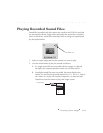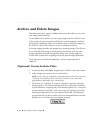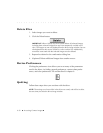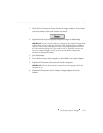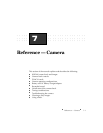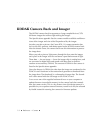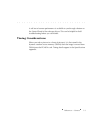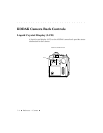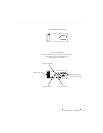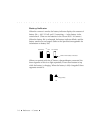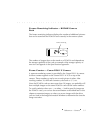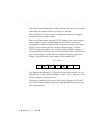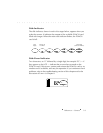
. . . . . . . . . . . . . . . . . . . . . . . . . . . . .
7-2 Reference — Camera
KODAK Camera Back and Imager
The KODAK camera back incorporates a charge coupled device (CCD)
full-frame imager that collects light striking the imager.
The Specifications appendix lists the camera models available and dimen-
sions of the imager and size of the file produced by the imager.
Just after you take a picture, the Canon EOS-1 N camera transmits data
such as the ISO, aperture, and shutter speed to the KODAK camera back.
After the shutter closes, the camera back uses this information to process
the image data.
When you take a picture, light passes through the lens onto the imager;
each pixel in the imager receives and stores a specified amount of light.
These data — for one image — leave the imager chip in analog form, and
are converted to digital form and stored with other data in dynamic
random access memory (DRAM). The amount of DRAM in the camera is
listed in the Specifications appendix.
Once the data are in DRAM, the data from the image are transferred to the
PCMCIA card. Hardware in the camera back generates a thumbnail from
the image data. The thumbnail is a subsample of image data. The thumb-
nail is then stored with the full image on the PCMCIA card.
You can use one of the supplied software drivers on your computer to
update firmware (nonvolatile memory) in the camera back that controls
how the camera works. This is a key feature since this design means it is
possible for you to update camera firmware yourself as it may be released
by Kodak instead of returning the camera for firmware updates.




